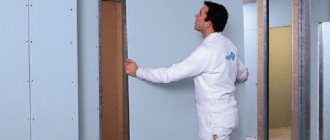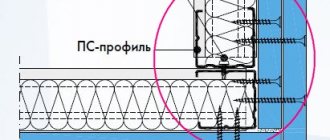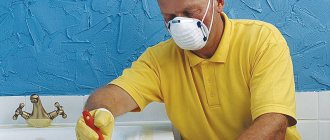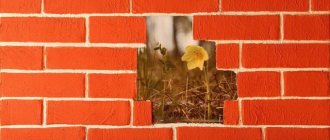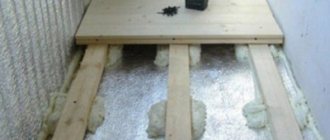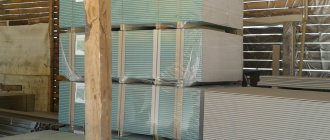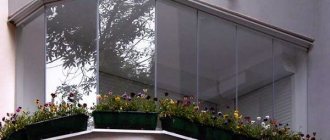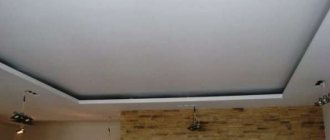When you start talking about upholstering entrance doors with dermantin (it would be more correct to say leatherette, but this is the case when erroneous spelling and pronunciation prevailed over the correct one), then you can hear in response that this is a solution from the last century, the material is ugly and impractical. But this can only be said by those who do not know that manufacturers of building materials have developed and introduced to the market a whole line of dermantin fabrics with a beautiful leather-like texture in various color shades.
As a result, new upholstery materials are gaining more and more popularity every year - do-it-yourself door upholstery with dermantine has become fashionable again. This is due to the beautiful appearance of the doors, wear resistance and low cost of materials.
General description of new leatherette fabrics
The classic definition of leatherette says that it is a rolled material based on woven fabric made from cotton thread, on the surface of which a layer of colored nitrocellulose is applied. Material manufacturers took into account previous shortcomings and decided to replace the woven base with a porous polyvinyl chloride film.
The surface began to be covered with polyester, polyurethane or a mixture of leather fibers and latex crumbs. In the first two cases, the new dermantins were called eco-leather, and in the last version, using a mixture, they were called recycled leather.
As a result, practically new materials were obtained, which differ:
- elasticity;
- wear resistance;
- breathability;
- strength;
- affordable price.
Tactile sensations make it practically impossible to distinguish synthetic materials from well-crafted natural leather. But the main aesthetic advantage of the new leatherettes is the ability to be painted in any color and create a beautiful surface texture. The price of the canvas depends on the components and ranges from 500 to 1500 rubles/m2.
Beautiful examples in the interior
Thanks to leatherette you can change the appearance of any door. Surface decor can be simple and minimal, or it can be a more complex and interesting solution.
You can upholster not only entrance doors, but also interior doors. Upholstered lining will look great on cabinet doors. The main thing is to choose the right color and decide on the pattern.
Sources
- https://ProDverivdome.ru/obivka-dverej-dermantinom-svoimi-rukami-poshagovaya-instruktsiya/
- https://StroyGuru.com/dveri/kak-obshit-dver-dermantinom-svoimi-rukami/
- https://dekoriko.ru/dveri/obivka-dermantinom-svoimi-rukami/
- https://oboiman.ru/inside/obivka-dverej-dermantinom-svoimi-rukami-32-foto-kak-obsit-s-uteplitelem-posagovoe-rukovodstvo-po-obsivke-vhodnoj-dveri-kak-pravilno-obtanut. html
- https://o-dveryah.ru/dizajn/kak-obit-dermantinom-svoimi-rukami-poshagovo-foto/
- https://remoo.ru/okna-i-dveri/obivka-dveri-dermantinom
- https://DomZastroika.ru/dveri/vhodnye/kak-obit-dver-dermantinom-svoimi-rukami.html
6 339
Pros and cons of dermantine
The consumer properties of new rolled materials for covering entrance doors and other household purposes are even superior to natural leather in a number of indicators. Among them, experts include:
- affordability for most consumers;
- resistance to moisture, microorganisms and decay;
- very high tensile and tensile strength;
- wear resistance and durability;
- operation in the temperature range from -40°C to +60°C;
- service life - at least 20 years;
- high heat and sound insulation qualities;
- immunity to solar ultraviolet radiation;
- a wide variety of textures with a wide range of colors;
- easy maintenance and the ability to use chemically active detergents.
There are only two disadvantages, but they are quite significant:
- impossibility of repair in case of mechanical damage or cuts - a complete re-upholstery of the entire covering will be required;
- All types of new dermantins are capable of maintaining fire and belong to the G2 flammability group.
These disadvantages are not critical and, given the large number of advantages, can be considered insignificant.
Materials and tools for upholstering doors with dermantine
If you strictly follow the order of work, prepare all the necessary tools and use high-quality materials, then any man can correctly upholster a door with dermantine on his own. For upholstery you will need the following:
- rolled leatherette;
- insulation in the form of thin sheet foam rubber or isolon;
- decorative nails for wooden doors, and self-tapping screws for metal doors;
- polymer glue and brush for one-time use;
- thin braided brass wire or decorative polymer cord;
- tape measure, ruler and pencil;
- hammer;
- furniture stapler;
- sharp knife and scissors.
For metal upholstery, you will need a screwdriver, without which it is impossible to tighten the screws.
Door trim instructions
The full scope of work on covering the front door with dermantine includes the following stages:
- preparatory activities;
- production and fastening of the roller;
- surface upholstery;
- decoration;
- finishing works.
The total duration, even for a non-professional, usually does not exceed 8 hours.
Preparatory stage
Before upholstering the door with dermantine, preparatory work is carried out, which includes:
- dismantling locks, handles and peepholes;
- removing the door leaf from its hinges and placing it on a stand;
- audit of the condition of the box and repair if necessary;
- removal of old upholstery, if any;
- inspecting the door for its integrity and checking its geometry;
- cleaning and degreasing the door leaf on both sides;
- painting or coating with a protective composition;
- cutting insulation to fit the door;
- cutting leatherette with an overlap of 100-150 mm;
- development of a patterned decor scheme;
- laying leatherette and securing it;
- production of rollers.
Rollers are called dermantine tubes with insulation located along the edge, which cover the gap between the canvas and the box, and also serve as a decorative element. Depending on the direction of opening, doors can be fixed to the frame or door leaf.
Manufacturing and installation of the roller
The number of rollers depends on the type of door hinges installed. With an open design, 6 tubes are required, and for a hidden design, 4 are enough. The fact is that the external hinges are not covered with this decor.
To make a roller, strips of dermantine 100-150 mm wide are required. They can be taken from the scraps that remain after cutting the main material. The length of the roller should take into account the possibility of a slight overlap to form beautiful angles.
Nail or screw the prepared strips with self-tapping screws along the edge of the door or door leaf with the front side facing away from you. Place the insulation on the strip, cover it with dermantine and connect the seam using quick-drying polymer glue.
Insulation.
As a result, the fixed roller should protrude beyond the edge of the door leaf or frame by no more than 30 mm.
Preparatory stage
Before upholstering a metal or wooden entrance door with leatherette with your own hands, it is necessary to dismantle it, because if the structure hangs on hinges, this will not be possible.
The canvas is removed and placed on any base, preferably four stools. All fittings, trim (if any), and locks are removed.
It is worth carefully inspecting the canvas and if there are signs of rot or blooming, then it is necessary to take appropriate measures and treat the canvas with a special sealant.
Attaching the insulation
Here people's opinions differ - some believe that insulation is not needed, others are inclined to believe that it is still necessary. But experts say that insulation, even of small thickness, is still needed. It will act as a substrate on which it will be much easier to attach dermantine, and you can completely eliminate the appearance of wrinkles on the upholstery over time.
The insulation is secured using glue or staples. There is nothing complicated about this, the main thing is that there is a gap of 1 cm around the perimeter of the canvas between the edges and the insulation.
Manufacturing and installation of the roller
To make door upholstery with dermantine look aesthetically pleasing, you need to make rollers, photos of which are below. To do this, you will need strips of dermantine with a width of 100 to 150 mm. It is not necessary to purchase them additionally; you can use the scraps that are left after cutting the main material. As for the length of the rollers, it should be a little longer in order to form beautiful overlaps at the corners of the canvas.
The prepared strips are attached to the edges of the outer fabric using glue or self-tapping screws, insulation is placed on top and covered with dermantine. You can connect the seams using polymer glue, which dries quickly. After the roller is attached, it should protrude beyond the edges of the canvas by no more than 3 cm.
What to consider when attaching the upholstery?
- When finishing the canvas with insulation, its edges along the perimeter of the door are folded in order to increase the strength of the dermantine in the places where it is fastened with nails;
- The dermantine on the rollers needs to be slightly tucked, that is, overlapped;
- Its fixation on the canvas should begin from the top, gradually descending to the bottom, while checking the correct installation of the upholstery. If a slight distortion occurs, it is not difficult to eliminate it;
- At the bottom of the canvas, rigid fixation is made after air is removed.
Classic upholstery technology
This is the easiest way to cover a door with dermantine yourself. The design of the canvas can be wooden or metal. This factor implies significant differences in performance.
To finish a wooden door leaf:
- place insulation between the padded rollers and secure it with a stapler or glue it;
- Tuck the leatherette fabric around the edges and spread it on the surface so that it goes under the rollers;
- secure the leatherette with decorative nails along one long side, at a distance of 5-7 mm from the edge of the roller, with a fastening step of 100-120 mm;
- after that, at the same distances, hammer nails along the top and bottom sides, and then along the remaining edge.
In the laid and secured canvas, cut holes for the elements of locks and fittings. Installation locations are easily determined by touch. The surface decoration process will be discussed later.
When covering a metal sheet: it is impossible to hammer in nails and therefore special self-tapping screws are used, which are screwed in with a screwdriver or a low-speed drill. Moreover, they are twisted at the points marked on a pre-drawn diagram of the wire clamping decor.
Marking.
Button fastening.
But first the insulation, and on top of it the leatherette, is temporarily fixed with glue. The decorating process completes the work and secures the canvas completely.
Carriage upholstery method
The idea of carriage technology is that insulation and dermantine upholstery are fixed on a sheet of plywood at least 10 mm thick and exactly the same size as the door leaf.
Holes are drilled in the plywood sheet in accordance with the intended surface decor pattern. Usually this is a continuous division into diamonds or squares, although other finishing options are allowed.
Marking.
After this, insulation is glued to the surface of the plywood sheet, in which, using a special crown for soft materials, recesses are also selected that correspond to the markings of the holes in the wooden sheet.
Cutting holes.
The dermantine fabric is secured (sewn) step by step with brass wire or cord, which is passed through on both sides and attracts the upholstery to the plywood sheet without nails. The plywood sheet itself is fixed using long self-tapping screws screwed onto the back side of the door leaf.
What to paint with?
Over time, a door covered with leatherette may lose its attractive appearance. If the resulting abrasions are local in nature and there are not many of them, then there is no point in changing the leatherette; it can be restored using special paints.
Painting leatherette is a completely inexpensive and affordable way to tidy up a door covered with it. The main thing is to choose the appropriate option.
You can paint over damaged areas using acrylic paints. They adhere perfectly to a wide variety of surfaces, including leatherette. You can use special paints for leather. Due to their composition, these paints remain on the surface for quite a long time, do not fade or peel off over time.
In order to more accurately select a color that is closest to the original material, it is better to purchase a set of paints. Mixing colors will allow you to choose the closest possible shade.
To properly paint a leatherette door, you must first prepare the surface. First, clean it of dirt and dust, and then treat the area to be painted with alcohol. Now we prepare the desired shade. You can mix shades on a special palette, or you can take a sheet of foil and apply paints to it. To make working with paints easier, you need to add a little acetone.
Now you can start painting. The paint is applied either with a brush or with a foam sponge. 15-20 minutes after applying the paint, when the first layer is completely dry, you can apply the second.
Upholstery decor options
In most cases, decor is provided on the surface of doors covered with dermantine. There are a huge variety of decoration options and the choice depends only on your taste and imagination. The only thing to consider is that wire, cord or simply decorative nails provide additional fastening of the canvas to the surface. Below are some options for such finishes.
To complete the decoration, markings are made, along the points of which nails are driven 1/3 of the way. After this, a wire or cord is pulled over them, the nails are driven to the end, creating a relief pattern due to the tension of the cord.
Further use of the upholstery
The upholstery surface, covered with polyester, polyurethane or a mixture of leather fibers and latex crumbs, is easy to clean with a soap solution. Chemical detergents may be used. However, to avoid discoloration, test the cleaning solution on a scrap of upholstery material first.
If abrasion appears and the color of the material changes, these places can be easily touched up. The most important thing is to accurately guess the color shade. To do this, contact a specialized workshop and bring there a sample from the remaining and saved scraps.
Modern leatherette is a strong and durable material that usually does not require additional care other than cleaning it from dust and dirt.
How to smooth it out?
A situation often arises when leatherette becomes wrinkled from long-term storage in rolls, and it is not possible to carry out repairs with this material. But there is a way out - you can smooth it out. The main thing is to be patient and follow certain rules.
You can smooth this material using water . To do this, a piece of leatherette needs to be spread on a prepared surface. Then take a piece of wet cloth (you can take a sheet), wring it out thoroughly and place it on the leatherette. As the piece of fabric dries, the leatherette cut will smooth out.
There is another method. The prepared piece of leatherette is laid out face down on the ironing board. The temperature on the iron is set to one. A damp cotton fabric is placed on the leatherette and ironed. You can not wet the cotton fabric, but use the steam function on the iron.
With this treatment, leatherette cannot be laid face up, as there is a high risk of burning it, despite the presence of cotton fabric as a protective layer.
